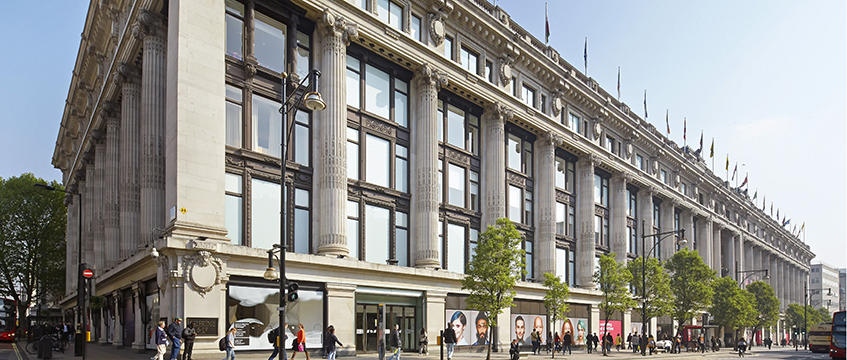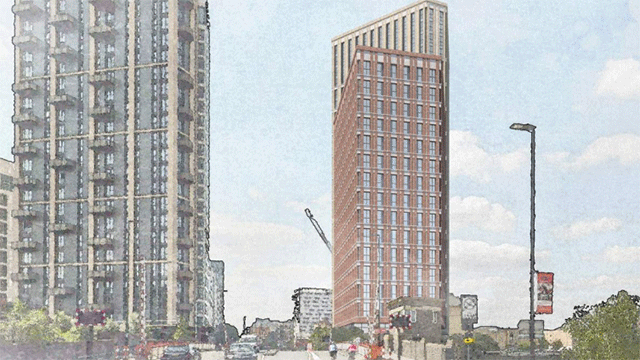2018 was a year of economic and political change. High street retailers struggled and fell under the pressure of rents and a consumer shift to e-commerce, the Budget saw Help to Buy extended until 2023 and the prospect of overseas buyer tax hikes, and the UK watched as the debate surrounding a Brexit deal rumbled on.
At the start of 2018, as noted in EG’s round-up of property forecasts for the year ahead, Miles Gibson, head of UK research at CBRE, predicted “extremely patchy growth performance” for some property sectors, but also foresaw a continued rise of industrials and logistics, along with strong growth for the hotels, build-to-rent and healthcare sectors.
So, what materialised – and what didn’t?
1Investment volumes set to hit £60bn
CBRE predicted UK commercial property investment to hit £60bn in 2018. This sat above Colliers’ estimate of £50bn and JLL’s £55bn.
Gibson said that to date £51bn of commercial property has been transacted, adding: “We remain confident that the £60bn figure will be achieved, given that Q4 is traditionally the strongest quarter of the year. Investors continue to be attracted to the UK market even as we prepare to leave the EU.”
Walter Boettcher, director of research and forecasting at Colliers, said: “The usual models and ‘rules of thumb’ suggest that the market should easily top £55bn in 2018, but extraordinary levels of political uncertainty have unnerved both domestic and cross-border investors.”
Jon Neale, head of UK research at JLL, upped the 2018 prediction to £60bn. He said: “The year has seen sustained international demand for UK property, with buyers from the Asia-Pacific region continuing to invest heavily.”
2Total returns of 5.6%, against JLL’s 6.4% prediction
JLL predicted a drop in returns from an estimated 10% in 2017 to 6.4% in 2018, and said the industrials sector would continue to outperform, with a total return of 9.9%, followed by retail and offices at 5.7% and 5.5% respectively. It said that returns would be driven “almost entirely” by rents.
Cameron Ramsey, senior research analyst at JLL, said: “Overall total returns are broadly in line with our predictions at 5.6%.” He added that the office sector has also outperformed, as predicted, with returns of 6.2%. “International investors continue to drive the central London office market, accounting for around 90% of purchases this year. As predicted, South Korean pension funds have emerged as a key group, but the field of buyers has been more diverse this year, offering encouragement going forward.”
Ramsey commented that the industrial sector has exceeded expectations, as strong rental growth attracted “an increasing range of investors – both domestic and international – which has in turn pushed prices higher and yields lower”. The sector has seen total returns of 16.6%, including capital growth of 11.4%. “This pattern has been seen across all regions and sub-sectors, with London and South East multilet leading the market.”
3House prices to match 1% growth forecast
Knight Frank, Savills and JLL predicted a lower level of house price growth of 1% for 2018, against Countrywide’s 2%. In London, Knight Frank accurately predicted a drop of 0.5%.
Liam Bailey, global head of research at Knight Frank, said: “We were pretty spot on with our UK growth forecast of 1% – the out-turn for the year will be there or thereabouts. Rising interest rates and Brexit have acted to slow price growth. We were accurate in anticipating price falls across London, which have been modest to date.”
However, prime outer London falls were significantly greater, with a drop of 5% against a prediction of no change.
Tom Bill, head of London residential research at Knight Frank, said: “Prime outer London is a different cross-section, where transaction costs have increased and the political uncertainty was felt more. In the second half of this year, the political uncertainty increased to the point where transaction volumes began to slow, with more hesitation coming into the market.”
4South East office uptake achieves predicted rise
Savills predicted that strong demand from multinational pharmaceuticals and large corporations would see office lease take-up rise in the South East, after a muted performance in 2017.
It expects a final year-end M25 office take-up of 3.56m sq ft, a 10.9% increase on 2017’s 3.21m sq ft.
Steven Lang, director for commercial research at Savills, said: “Three of the four life science companies mentioned in our 2018 prediction have acquired space (Sanofi), are in negotiations for a specific building (Novartis), or have announced an active requirement (UCB).”
Daryl Perry, head of research and client engagement at GVA, said: “2018 has seen serviced office take-up slow somewhat in central London, although it has proliferated wider to other parts of the country.”
5Occupier market achieves rental climbs
Retail spending and industrial sector employment growth was expected to drive greater demand for limited occupier space. AEW forecasted a surge in rental growth, with the market benefiting from e-commerce and logistics growth amid modest supply.
Hans Vrensen, head of European research and strategy at AEW, explained that prime headline rents have risen by nearly 3% in 2018 across all property types in AEW’s 100+ European market segments.
Vrensen said: “This was despite a slowdown in the UK, where Brexit-related uncertainty triggered a minor decline in prime London office rents. For 2019, we are again expecting good rental growth across the board. But we do forecast a slight slowdown, as limited new supply offsets a deceleration in economic growth across Europe.”
6Industrial rents up 4.2%, against CBRE’s predicted 5%
CBRE predicted industrials and logistics rental growth of more than 5% in 2018, due to the consistent gap between supply and demand in urban areas.
Miles Gibson of CBRE previously noted that, while some property sectors would see “patchy performance”, the “rise and rise” of industrials was set to continue. CBRE’s current expectation for the year is 4.2%, below the original prediction and 2017’s out-turn of 5.3%.
Gibson said: “This slightly lower forecast than our original 2018 prediction reflects slightly higher supply than expected, particularly in the supply of bespoke ‘big box’ logistics.”
7“Moderate” healthcare investments, with further potential
Knight Frank previously forecasted a surge in infrastructure funds and global investors purchasing UK health portfolios, with large demand for care homes and a national shortage of beds.
At the end of the year, Julian Evans, head of healthcare at Knight Frank, said: “Healthcare sector volumes have been moderate so far in 2018, but there remains potential for a late end-year surge.”
Evans said last year some £560m of deals were transacted in the last quarter, and noted that Knight Frank is currently advising on £6bn of healthcare mandates. He added that US REITs’ share of transactions has significantly dropped, with Asia-Pacific and infrastructure “now firmly the new money in town”.
“Debt markets arguably remain cheap, with cap rates seemingly at record pricing,” Evans said. “But as open-ended funds and institutions divest out of retail to focus on ‘alternative’ sectors, combined with overseas capital, UK healthcare will remain a very competitive sector to invest in.”











